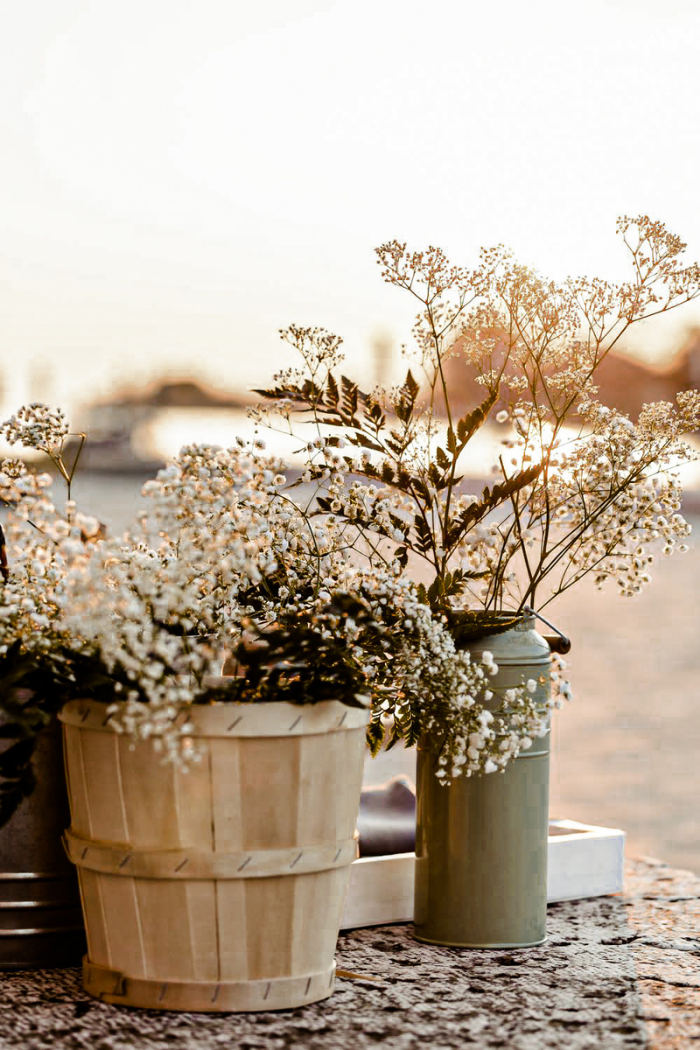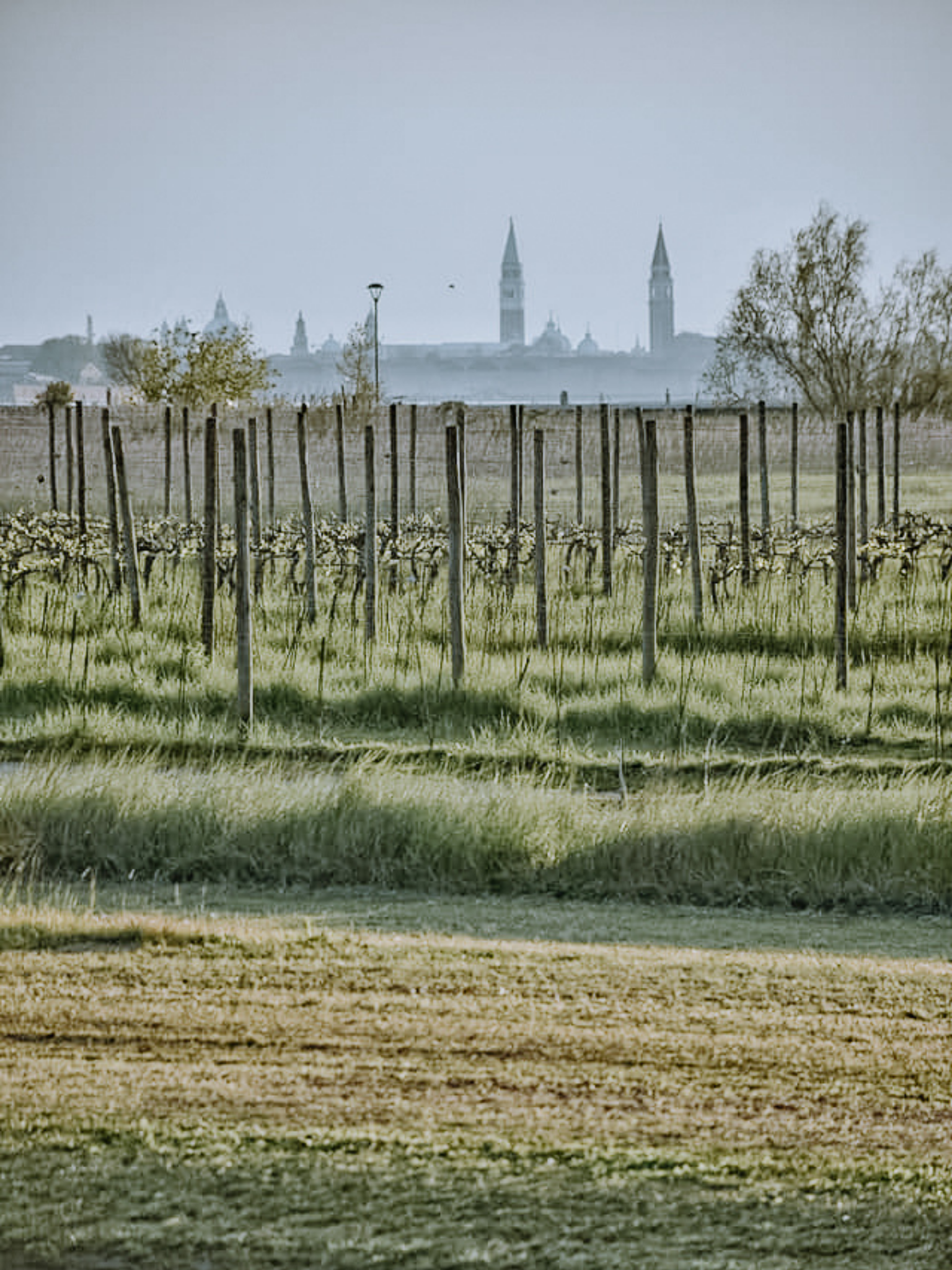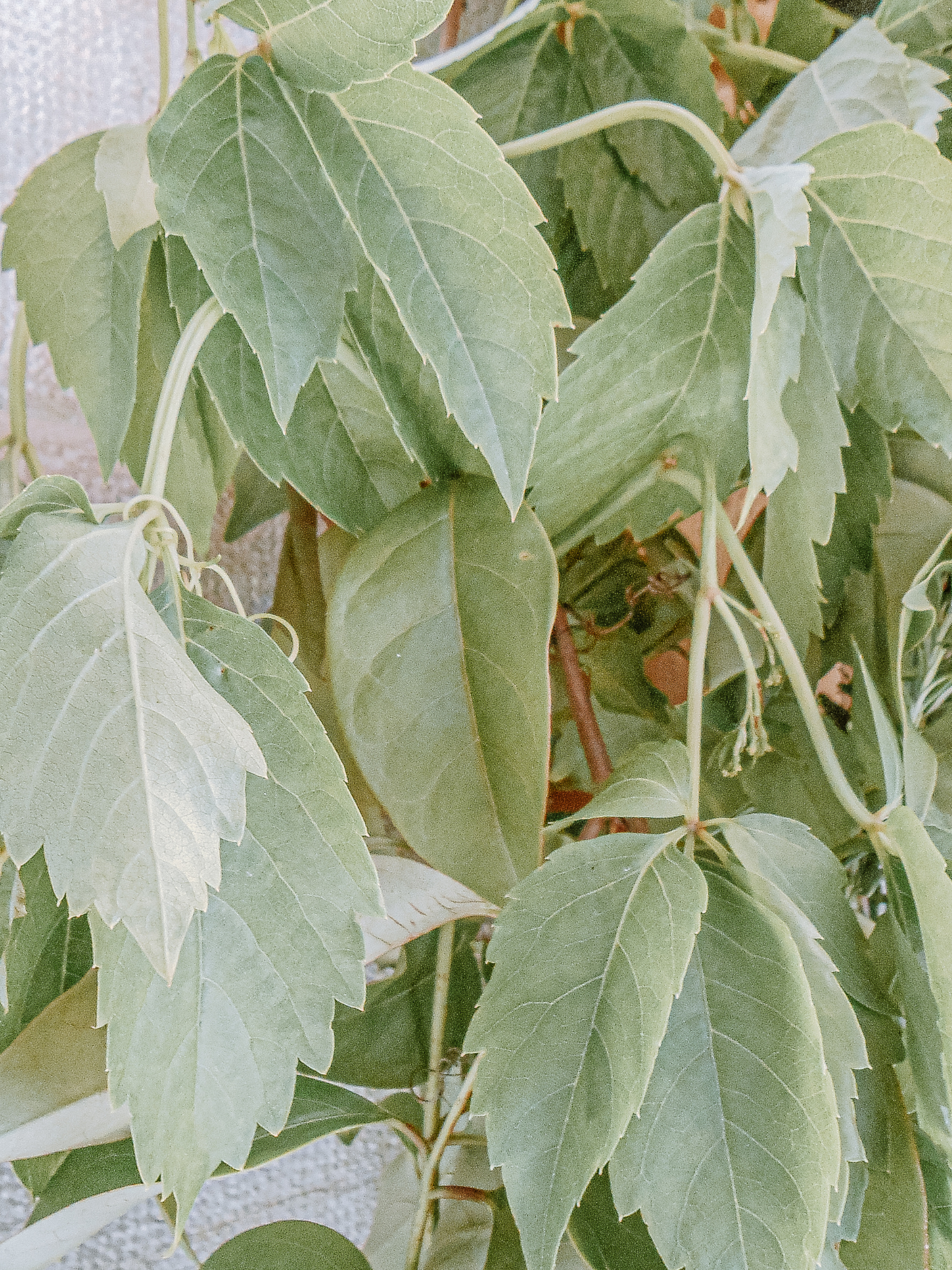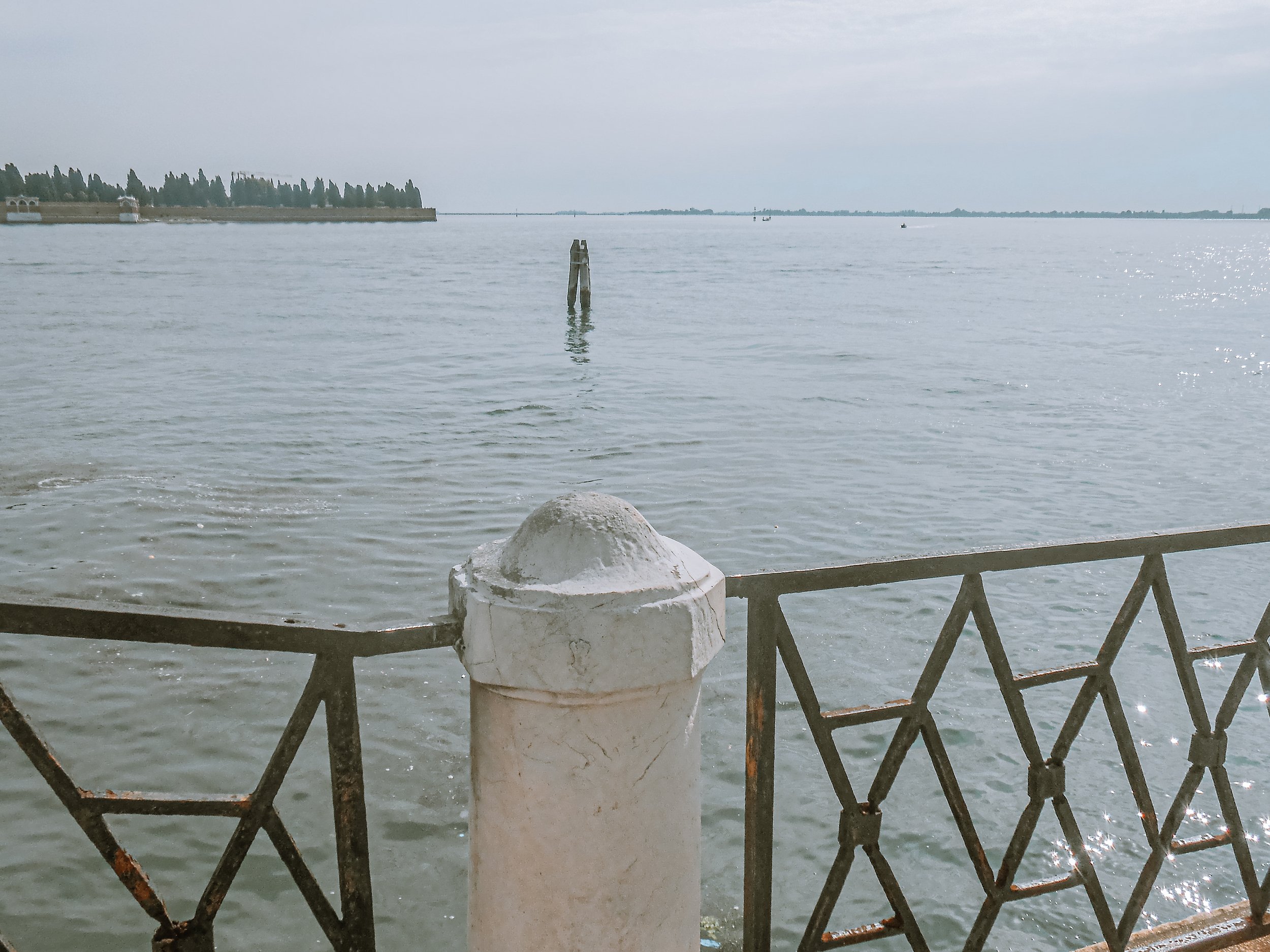SECRET LAGOON: IN THE VINEYARDS OF SANT’ ERASMO
Walking along Fondamente Nove on a limpid day, you can make out a long island in the distance, stretching forever behind La Certosa: This is Sant’Erasmo, the greenest spot in the Lagoon.
Such a bounty grows on Sant’Erasmo, the island of artichokes and vineyards. It’s home to the finest ingredients, tasting slightly of sea salt, that go into a favorite recipe of Venetian home cooking: The vineyard risotto – risóto de la vigna: In spring, it could flavored with young vines and raspberry leaves, white asparagus, white onions, garlic and herbs growing under the vines. It’s a luxurious dish served with walnut oil, lemon juice, and two types of cheese. You’ll discover the basic recipe in a minute.
So from Fondamente Nove, on the right, you get a glimpse of La Certosa, and somewhere in-between, nearer to San Francesco del Deserto and south of Burano, the sprawling island Sant Erasmo is located. From the distance, it looks like its beaches are lined with pioppi (poplars), and from above, it looks very green because it consists mostly of vegetable fields and vineyards.
Sant’Erasmo is the second largest island in the Lagoon, a little over 600 residents live in this green paradise, amongst reeds and sea lavender, framed by marshlands (called barene and velme) to the north, reaching out towards the island San Francesco del Deserto. In fact, walking around Sant’Erasmo regales incredible views on a clear spring morning, not just of the campanili of Venice in the distance, but of Torcello and Burano to the northwest as well. And beyond Torcello, you can make out a special secretive island group, which we call sunset islands for a special reason ..
In the marshlands, spirea and rovo (bramble) hedges blossom white in April. Wild laurel, aglio orsino (wild garlic), inula, dandelion, trifoglio (red clover), alchemilla, and wild asapargus abound, nurtured by narrow canals crisscrossing the island. There’s no time like spring for picking the herbs while enjoying the view of the bell towers of Venice in the distance.
Long before the wine harvest takes place between August and early October, tarragon, thyme, rosemary and lovage thrive in the vineyards. In May, fiori di sambuco (elderflower blossoms), cherries, and nespole (medlars) are harvested: They are used to make delicious and healthy syrups and flavor frittelles, a topic we’ll be covering in our culinary membership Laguna in Cucina in May.
In June and July, artichoke fields will be covered by purple blossoms, a sight worth discovering. In August, white peaches, pomodori cuore di bue and courgettes will be harvested, and in mid-autumn, the delicious but forgotten mela cotogna (apple quinces), ancient varieties of apples and pears, and of course, the grapes! And finally from late September, le zucche, incredibly large squashes, will be used to make crema di zucca – squash tarragon cream soup.
Whenever something is called nostrano at the markets in Venice, most probably, it has just arrived on the same morning from Sant’Erasmo, Le Vignole and Treporti, and the marshlands around Lio Piccolo and Lio Mazór called L’Orto del Doge.
Many varieties of flowers grow on Sant’Erasmo, most are wild but some are cultivated and also harvested and used in the kitchen. By late April, you’ll discover white and purple bindweed blossoms, and the first rose buds growing under the vines. So right now, Sant’Erasmo is a green paradise, when the leaves are all new and lush and tinged with bright green. There’s green everywhere you look, and you’d never expect to be on an island in the Lagoon, just north of Venice!
In the southeastern part of Sant’Erasmo, a special beach is located, called El Bacan. This beach is partly sandy and partly greyish-beige pepples, disappearing and reappearing constantly as the tides rise and fall. In fact, El Bacan comprises a couple of sandbanks which can only be reached by small boats. In summer, the tide changes only once a day, and is usually highest at noon, which means that El Bacan will be larger (more sandbanks above the water level) in the afternoon or early in the morning during low tide. In winter, El Bacan disappears twice a day because the tides also change twice in the Lagoon, and are more pronounced than in summer.
Sant’Erasmo is still a very private part of the Lagoon, and private are its recipes. They’re simple but made from incredibly fresh ingredients, exposed to the salty breeze and sun all year long. And many dishes are enriched with fish caught just north of the islands, by fishermen from Burano.
Call it recipes mare e campagna, but the Lagoon has also a long and little-known tradition of foraging for herbs and using wild herbs and fruit in the kitchen. Just like in this recipe for risotto below, which combines the best of spring greens from Sant’Erasmo (young courgettes, lovage, young wine leaves), and the catch of the day from Burano: Often, it’s anchovies – sardele, fried in a mixture of sun flower oil and butter, and sprinkled with parsley and lemon juice. A risotto called risóto de la vigna – the vineyard risotto.



